
A 1900s Toronto photo extravaganza
In the 1900s, Toronto burned. On the night of April 19, 1904, a small fire broke out in a necktie factory near the northwest corner of Wellington and Bay, lighting up the chilly April night. Thanks to a stiff southeasterly wind, within a few hours the blaze had penetrated south of Front St. Many of the wholesale stores and factories that dominated the area were completely gutted. Many collapsed into the street or in on themselves in great thunderous crashes.
By morning, 20 acres of downtown was a smouldering wreck. 5,000 workers were put out of work, some permanently. Total losses were estimated at $10 million--somewhere upward of $200 million in today's money. The photos above and below were taken from roughly the same location on Bay St. about a year apart.
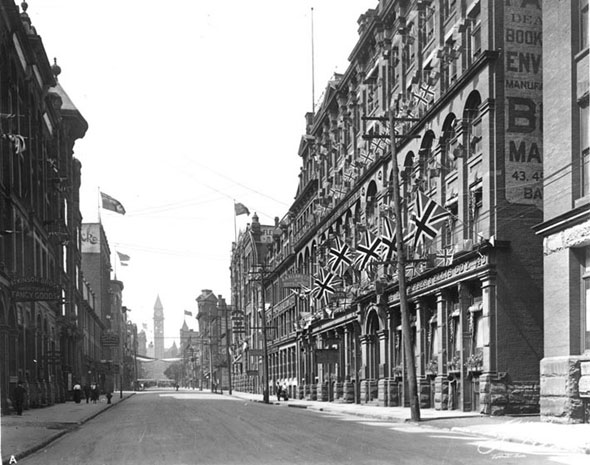
The fire had widespread consequences for the city. City council revised the building code to make provisions for fire safety, manufacturers began to move out of the downtown, and land south of Front St. was made available for the construction of present-day Union Station and the Dominion Public Building.
The decade also saw the arrival of the Traders Bank building, one of several to be the tallest in the British Empire, the completion of the King Edward Hotel, and a visit from the Duke of York.
Here's a look back at the 1900s in photos.
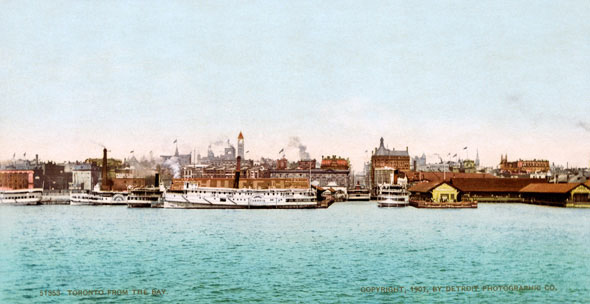
The turn-of-the-century skyline as depicted in a postcard.
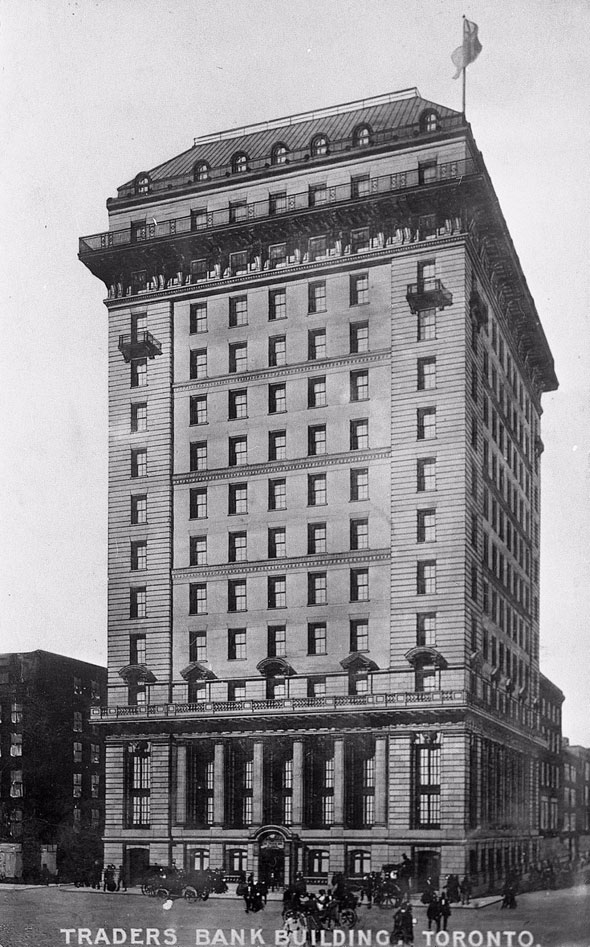
The Traders Bank building at Yonge and Colbourne shortly after it was completed as the tallest building in the British Empire in 1905. The design was provided by U.S. firm Carrère and Hastings who would later produce the famous New York Public Library in 1911. The neighbouring high-rise headquarters of Canadian Pacific would take over the title of highest skyscraper within a decade.
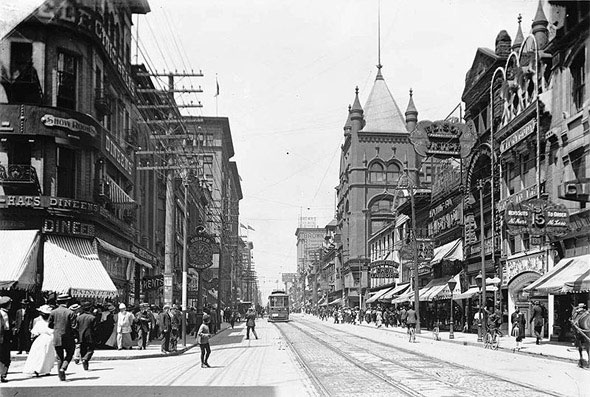
Looking north on Yonge from near Temperance St.
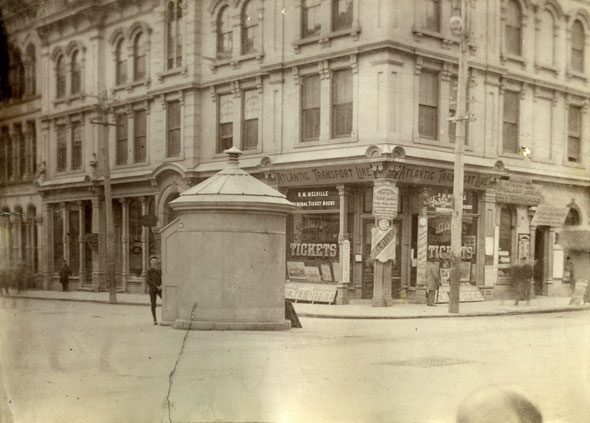
Entrance to an underground public lavatory at Toronto and Adelaide streets. The washroom was the first of its kind when it opened in 1885. Before 1930, Toronto built subterranean conveniences at major streetcar interchanges, including Queen and Spadina, Queen and Parliament, and Queen and Broadview. All have since been filled in.
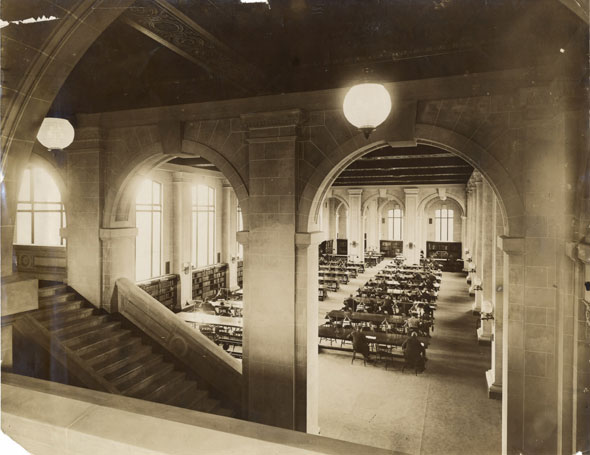
Interior of central library at College and St. George in 1909. It's now the Koffler Student Centre.
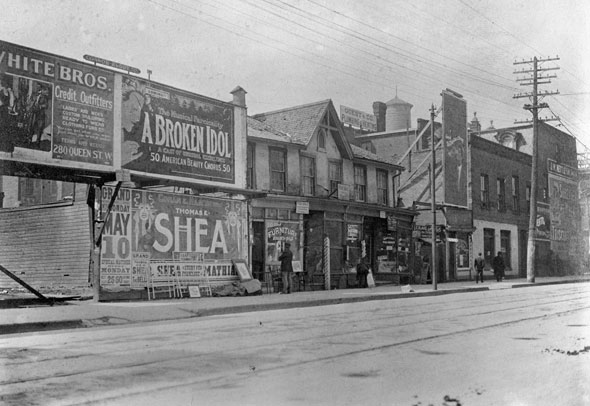
An unidentified location on the south side of Queen St. east of Church in 1909.
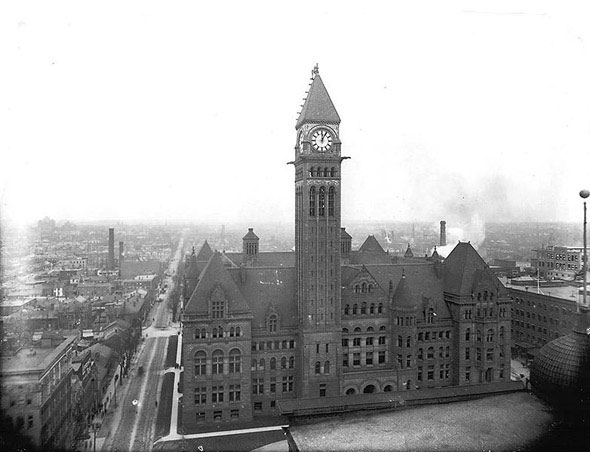
Toronto City Hall in 1907. The clock mechanism and bells were made in England and shipped to Canada in the 1890s and are still in regular service.
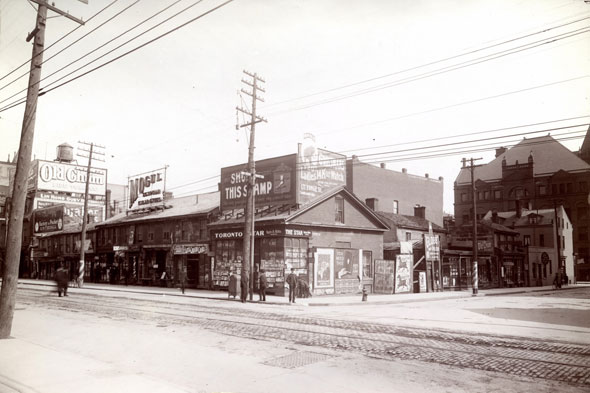
Southeast corner of Queen and Bay, 1906.
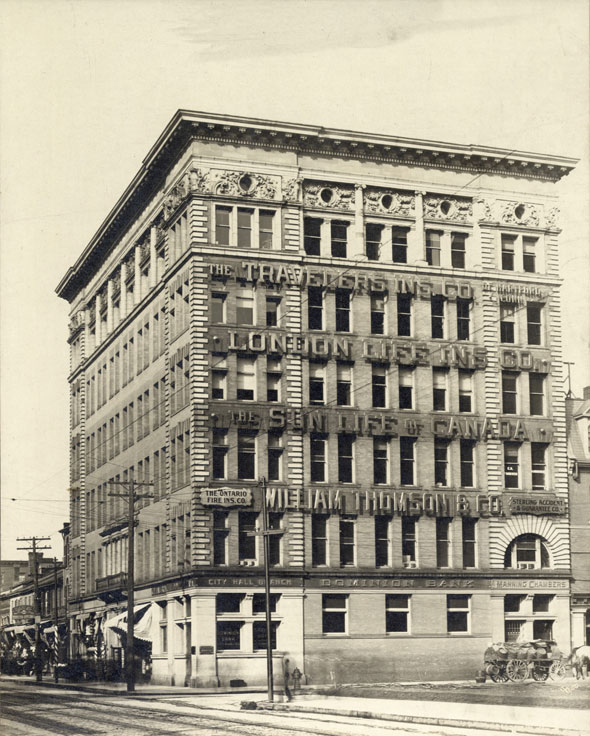
The Toronto Dominion Manning Chambers on the northwest corner of Queen and Bay. If it were still standing, this building would be on the outer edge of Nathan Phillips Square.
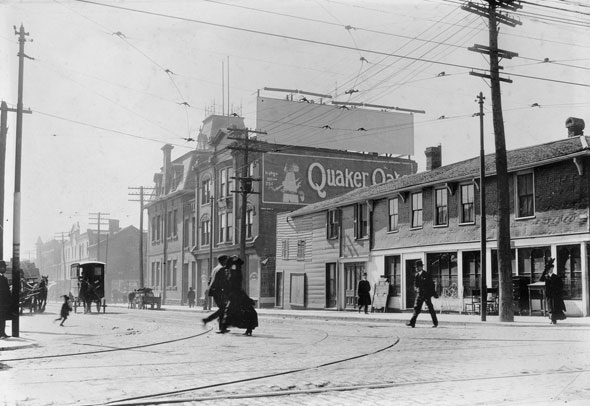
Southwest corner of Queen and York in 1909. Osgoode Hall is to the right, out of frame.
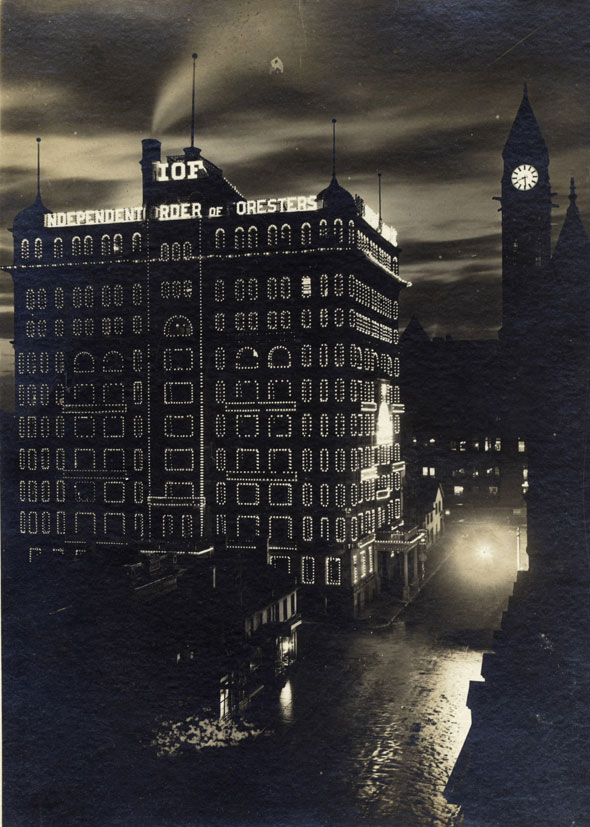
The Temple Building on Bay south of Queen lit up at night.
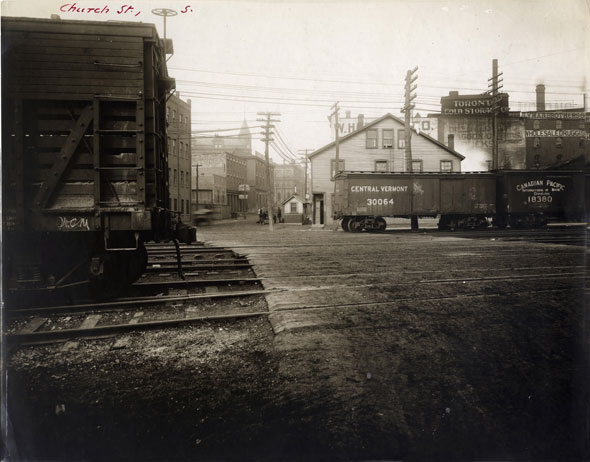
Looking north from Church and the Esplanade in 1907.
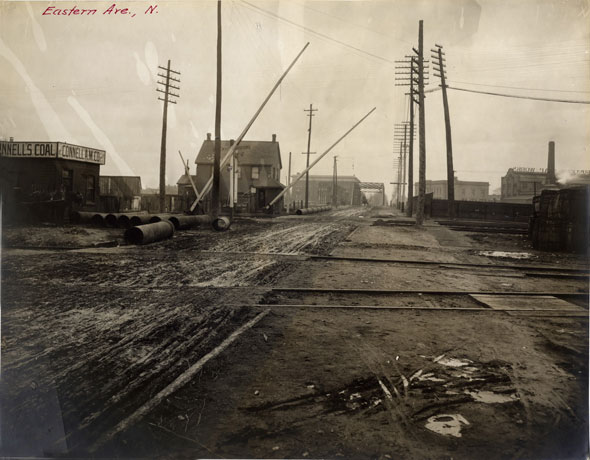
East along Eastern Ave. to the bridge over the Don in 1907. The Canadian Pacific railway line crossed the street at grade.
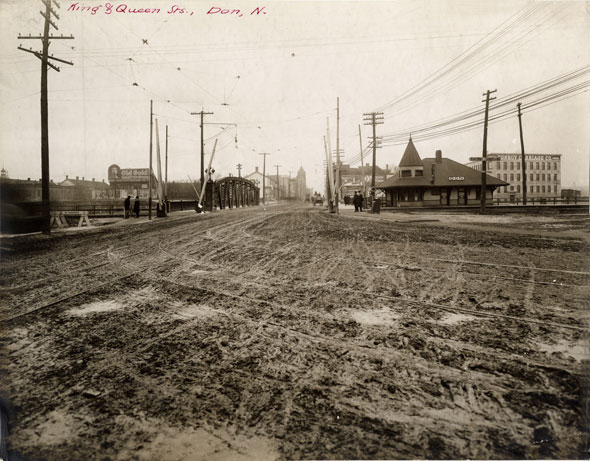
Looking west along Queen St. over the Don River bridge. Don station, pictured on the right, is now located in Roundhouse Park south of the CN Tower.
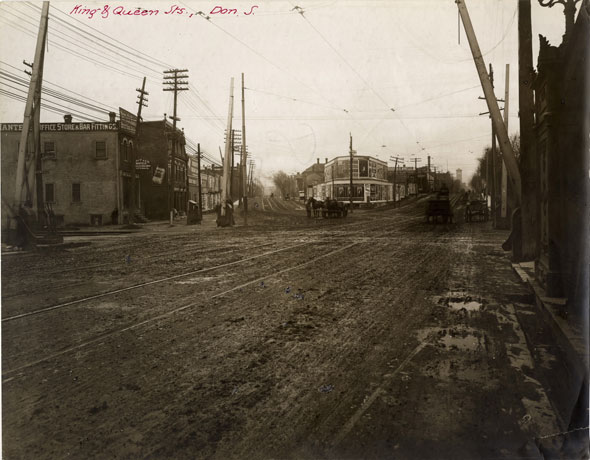
The intersection of Queen and King in Corktown in 1907.
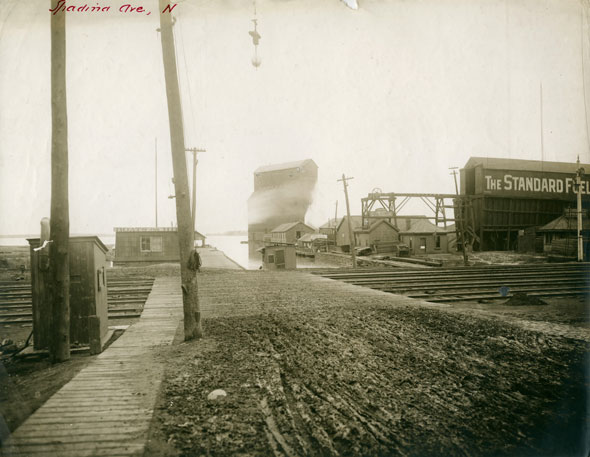
Wharves at the foot of Spadina in 1907.
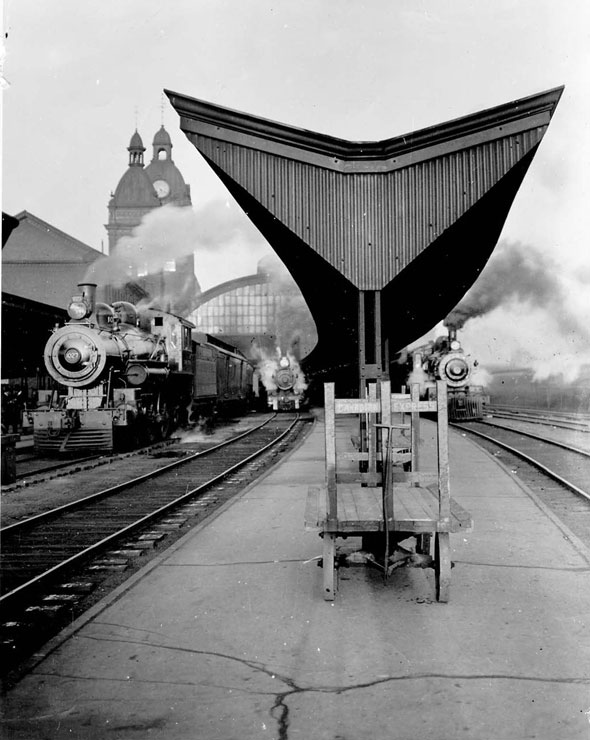
Old Union Station on Station St. Current Union Station was built on land that became available after the 1904 fire, starting in the mid 1910s.
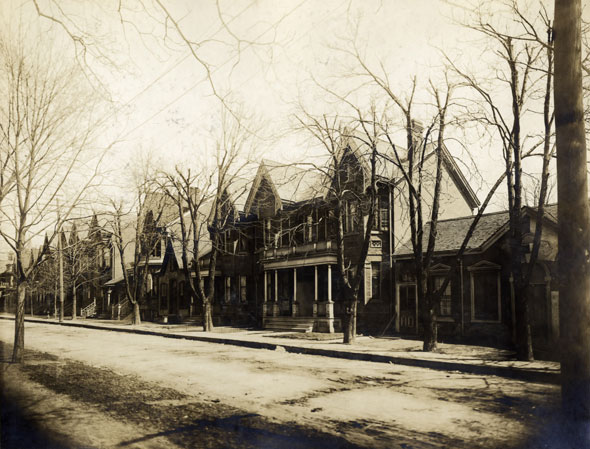
Houses on the east side of University Ave., south of College.
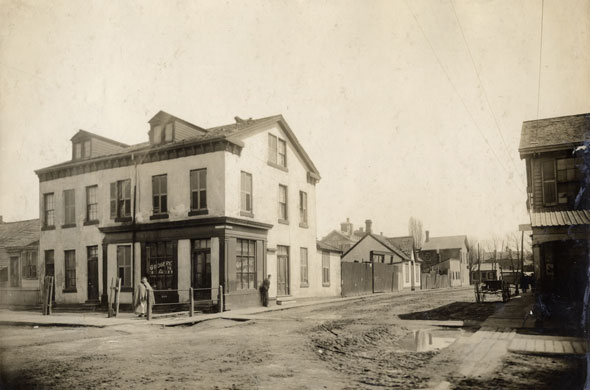
Christopher St. looking east from Centre Ave. near College and University in 1907.
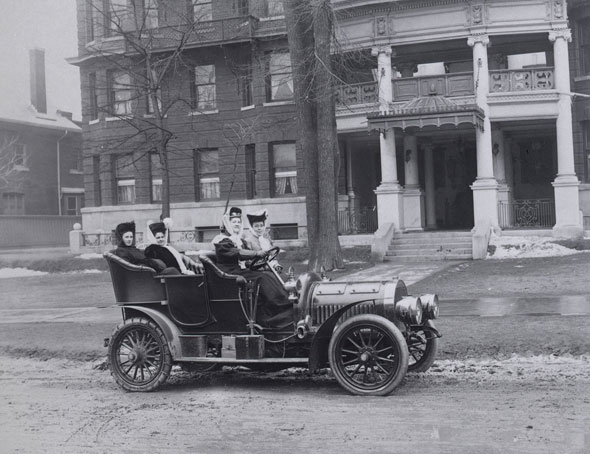
Women in a car outside the Alexandra Apartments on University in 1906. The building was the second-purpose built apartment block in the city after the St. George Mansions at St. George and Harbord. The Alexandra housed 72 suites across 7 floors and a communal dining room.
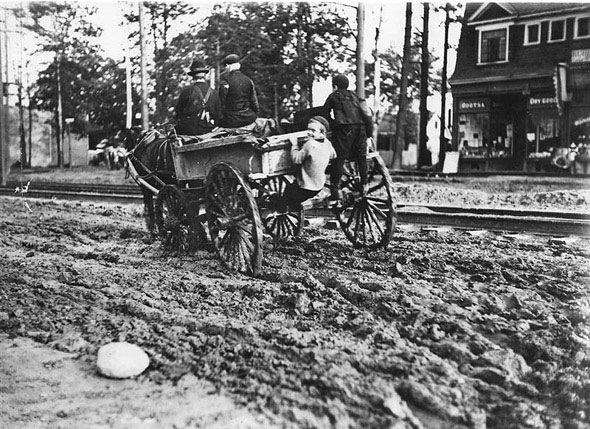
Boy clings to the back of a cart as it makes its way down a muddy stretch of road.
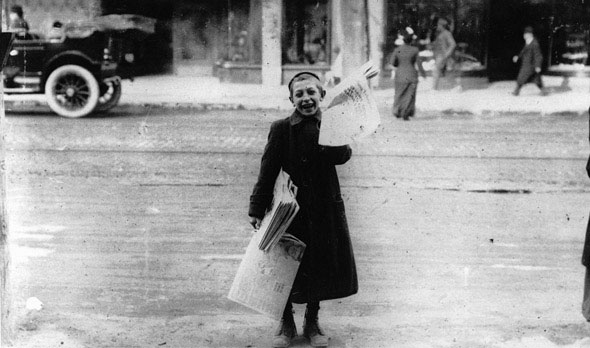
Newsboy sells papers on a cold winter street.
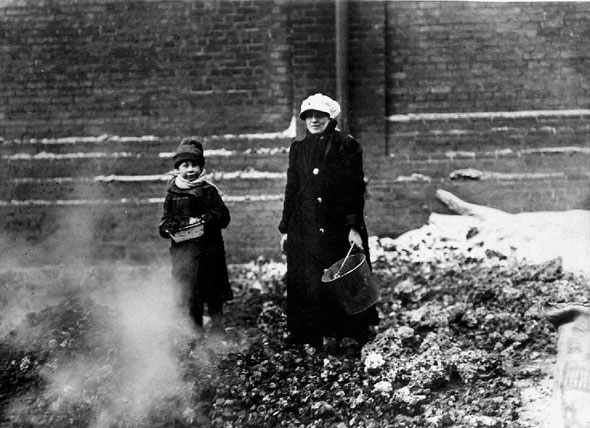
Woman and child possibly "picking coke," manually fishing out usable pieces of coke from ash piles for burning at home. One place this was known to occur was outside the steel-producing Kemp Manufacturing Plant in Cabbagetown. The name of Picking Coke Lane commemorates the rather bleak practice.
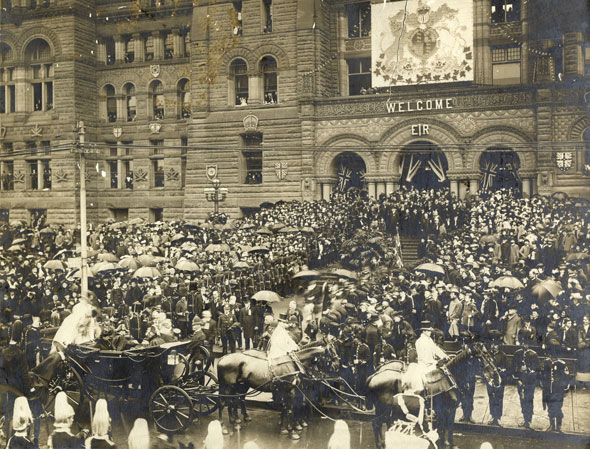
A crowd gathers outside City Hall to welcome the future King George V, then the Duke of York, to Toronto in 1901.
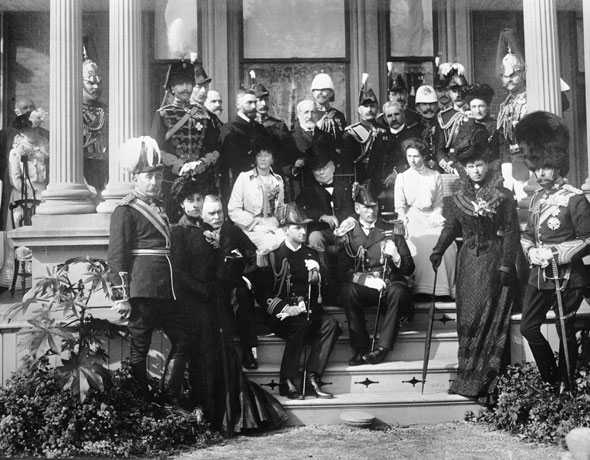
The future George V poses for a photo with local dignitaries in 1901.
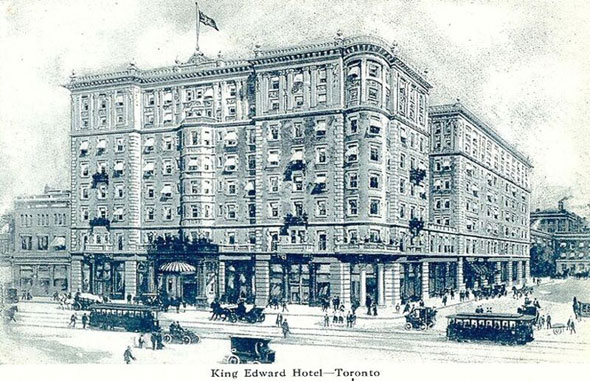
The King Edward Hotel as it appeared when it opened in 1903. Designed by Chicago architect Henry Ives Cobb and E. J. Lennox (famous for his design of Old City Hall,) work began in 1901. As part of the plan, Victoria St. was extended south of King to Scott St. It was named in honour of King Edward VII shortly before it opened in honour of Canada's newly-crowned monarch.
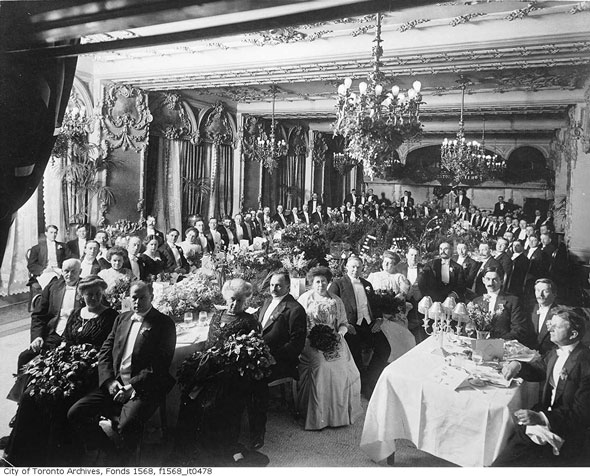
Dinner at the King Edward paid for by Sir John Eaton, of the Eaton department store family.
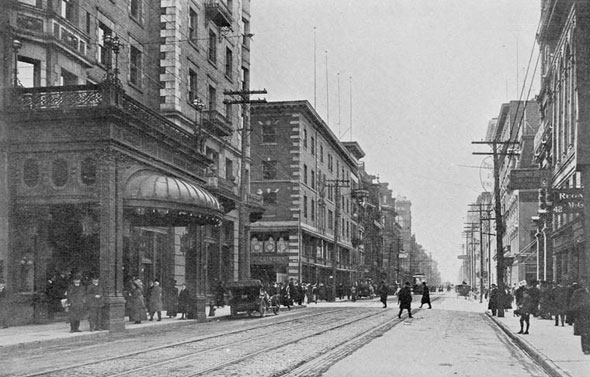
Looking west on King from outside the King Edward Hotel.
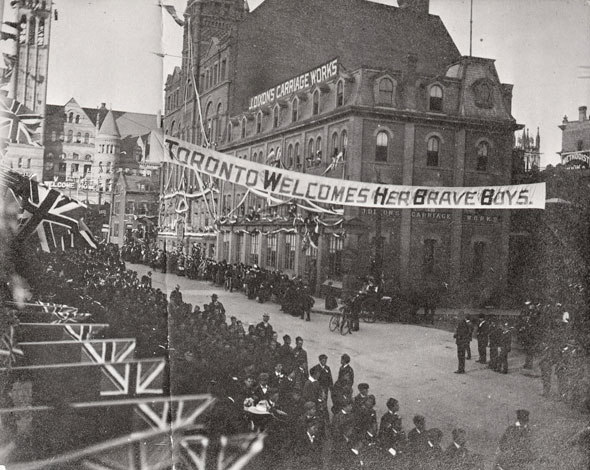
Parade celebrating the return of soldiers from the Boer War in 1902. The three-year conflict in South Africa was the first major deployment of Canadian troops overseas. Of the 7,368 men who fought against Dutch colonists in the region, 89 were killed by fighting, 135 as a result of disease, and 252 were wounded.
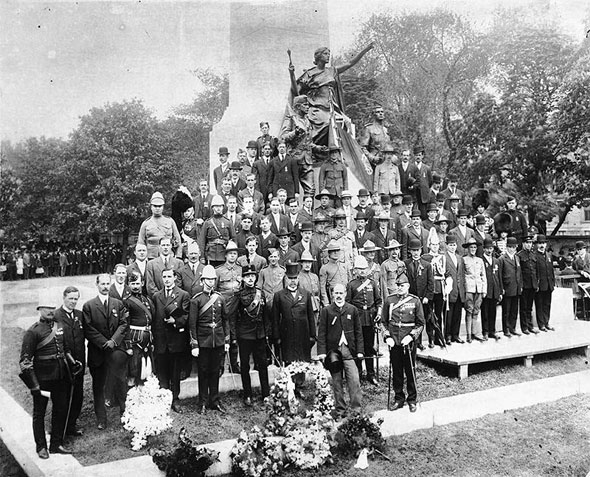
A monument to the Boer War was unveiled on University just north of Queen in 1908.
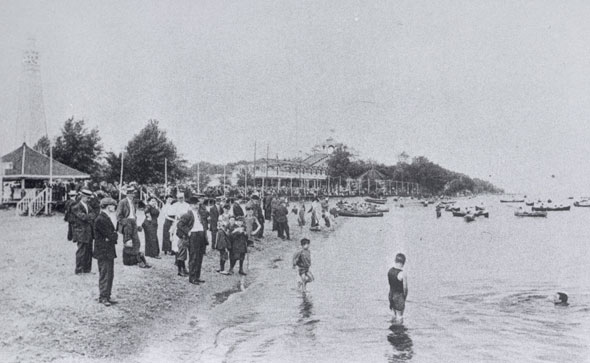
Scarborough Beach Park at Queen and Glen Manor Dr. in the Beaches some time after 1903.
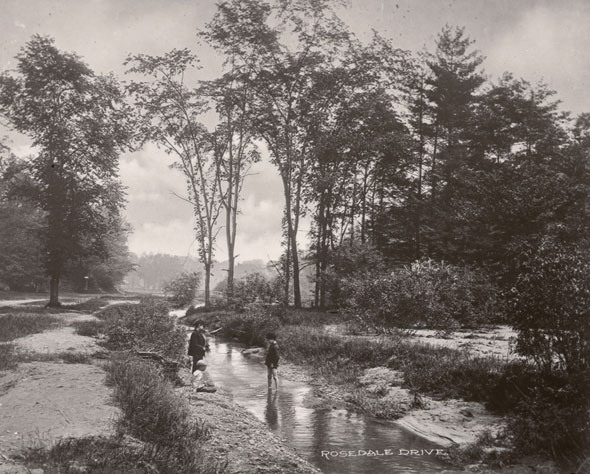
Kids playing in a bucolic Rosedale Ravine.
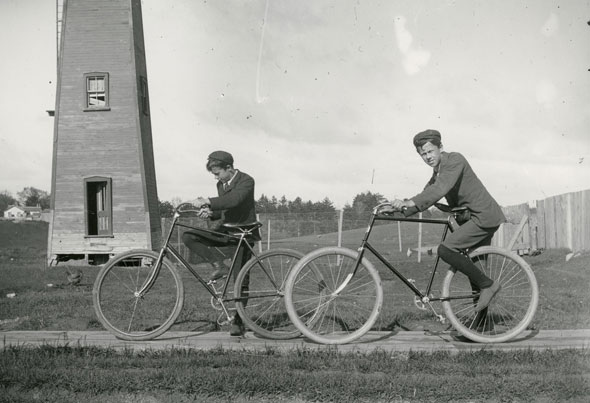
Cyclists outside a windmill on Kennedy.
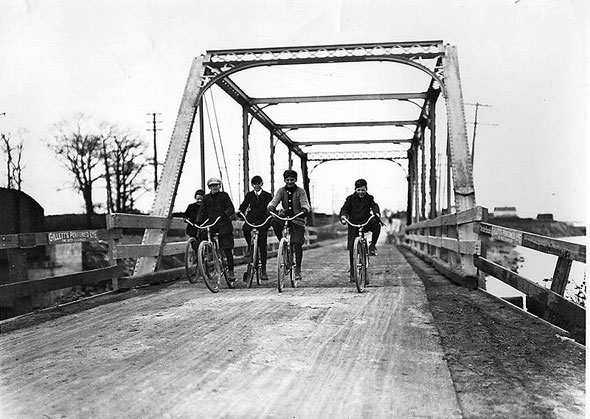
Cycling near Mimico.
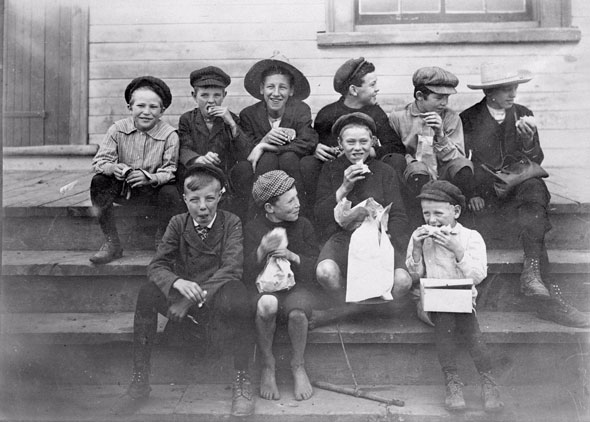
Kids from a school on Kingston Rd. near Highland Creek eat lunch in 1908.
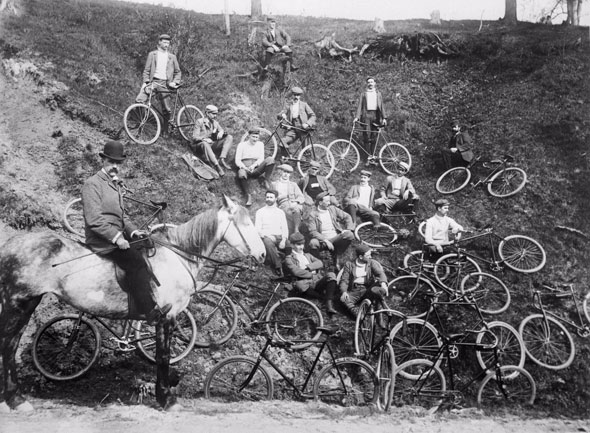
Members of a cycling club in the Swansea area.
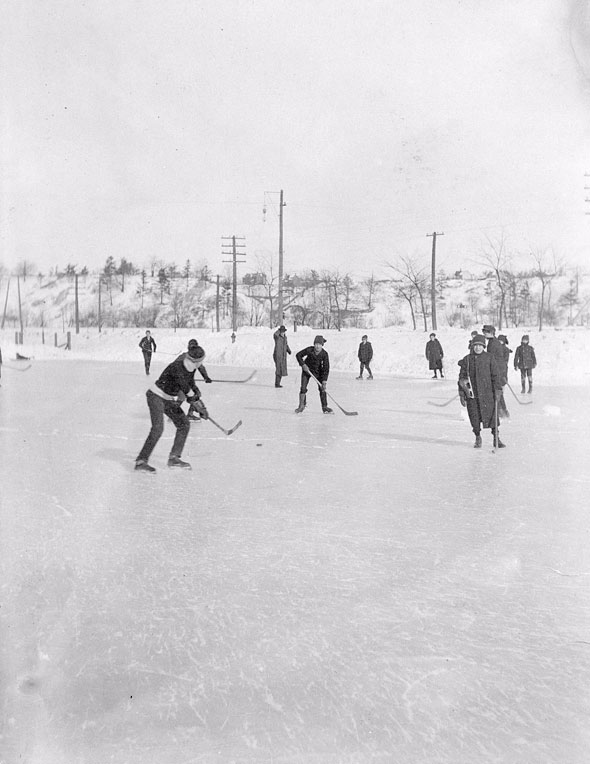
Hockey in a frozen Riverdale Park.
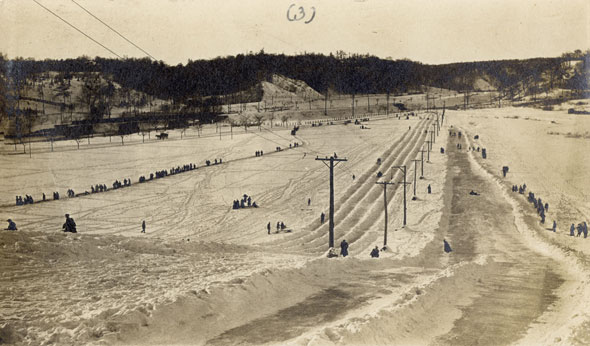
Amazingly long sled runs in Riverdale Park, possibly the same year.
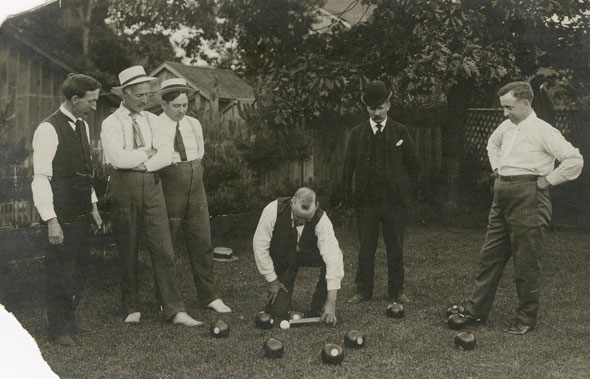
A bowls match in an unidentified location.
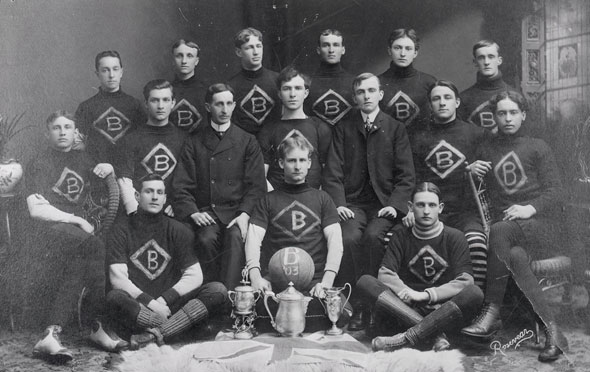
The Broadview football (soccer) team in 1903.

Bathers in the water outside Hanlan's Hotel on the Toronto Island.
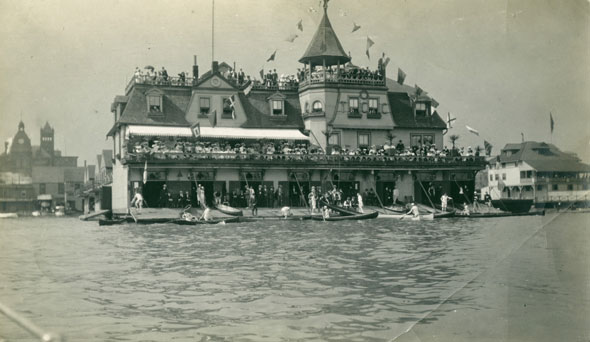
Toronto canoe club on the downtown waterfront in 1906. That's old Union Station in the background on the left.
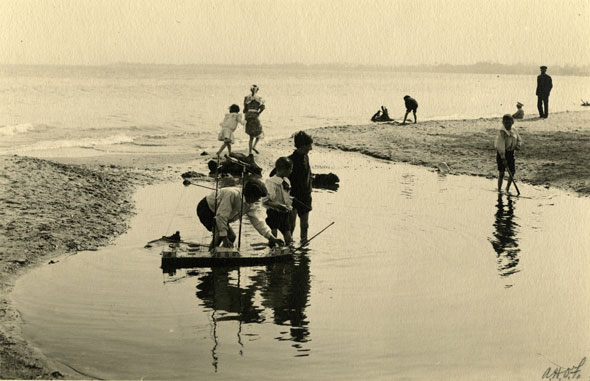
Playing on the beach at Sunnyside in 1903.
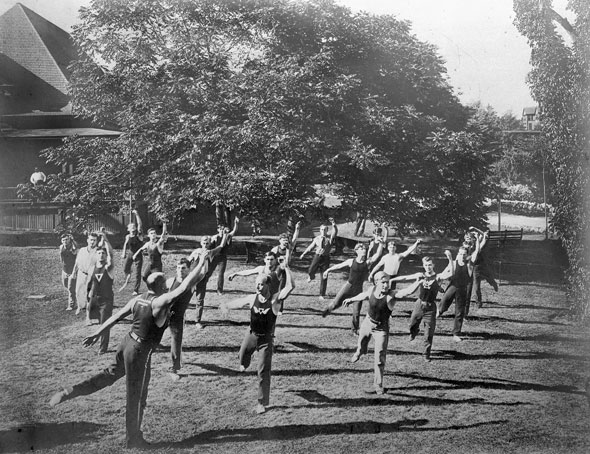
Calisthenics at the Broadview YMCA around 1900.
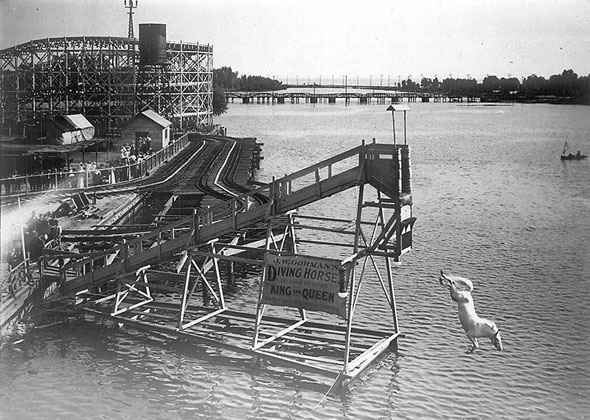
The famous diving horses of Hanlan's Point amusement park. The horse pictured is either "King" or "Queen," one of a pair owned by the traveling amusements of J.W. Gorman. Taken by prolific early photographer William James, the image has been viewed more than 6,500 times online, making it the most viewed of all the pictures at the City of Toronto Archives.
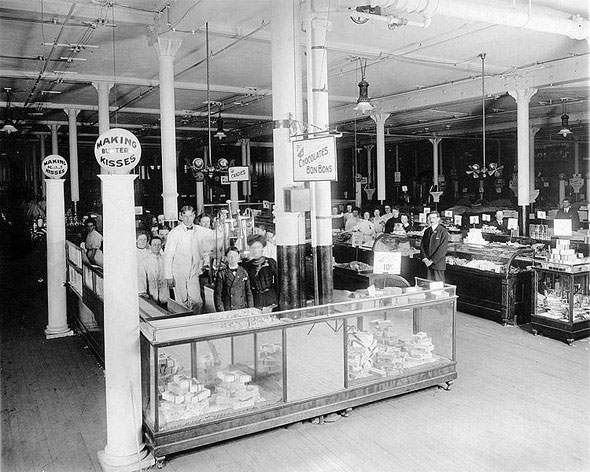
Interior of Eaton's candy department at Queen and Yonge.
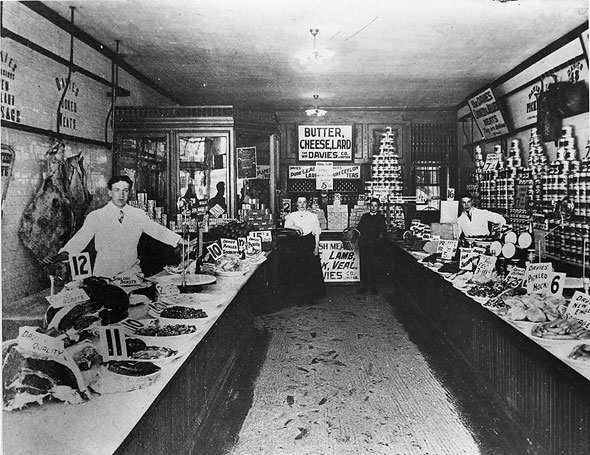
Inside a William Davies Company grocery store. Davies' stockyards at the mouth of the Don may have been the progenitor of the city's Hogtown nickname (that or it was an archaic insult from the smaller towns of the province jealous that Toronto tended to hog resources and attention.)
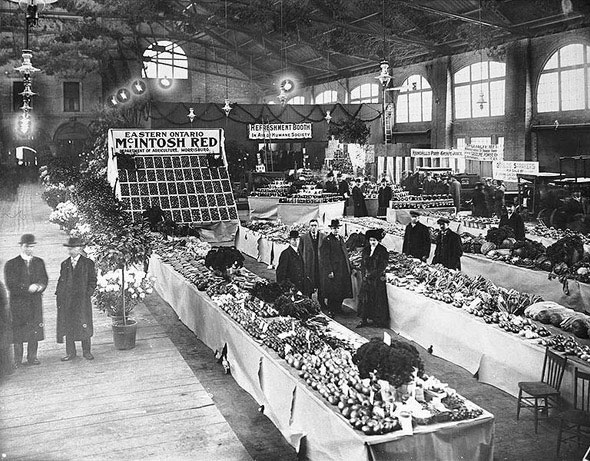
Inside the St. Lawrence Market in 1904.
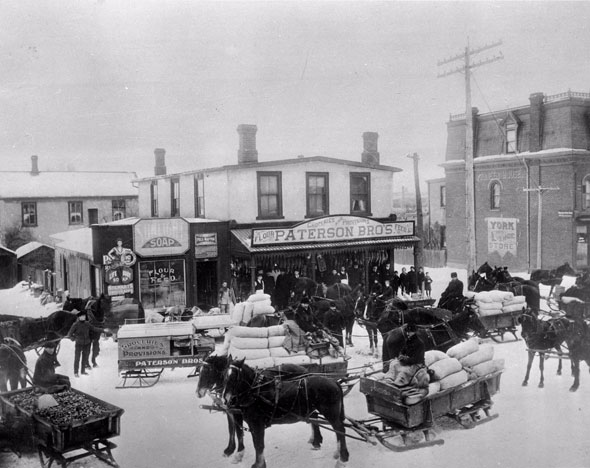
Traders gather outside a store at Danforth and Dawes Rd. around 1900.
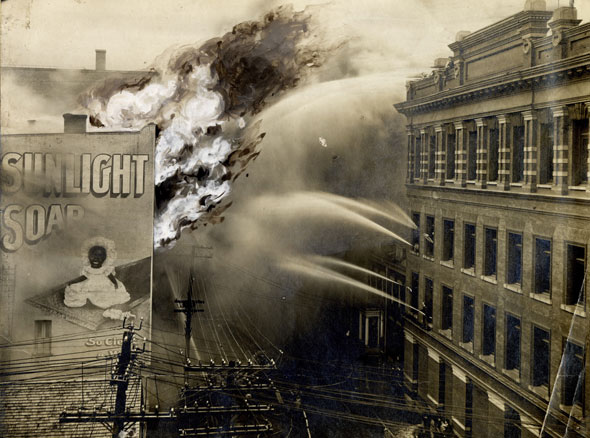
Hoses tackle the devastating fire that levelled a large portion of the city's manufacturing district in 1904. Flames added for effect afterwards.
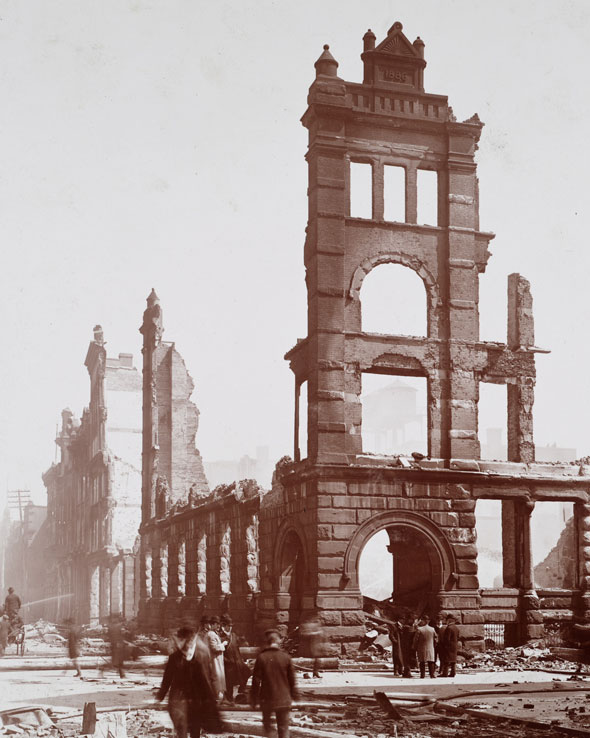
The alarm was raised by nightwatchman T. H. Johnson on April 19, 1904, around 8:30 p.m.
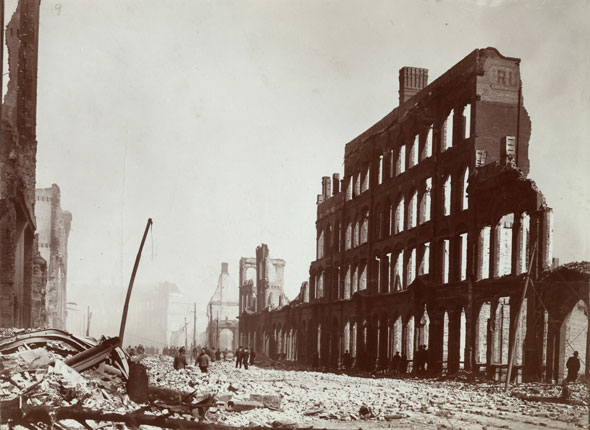
The area was mostly occupied by factories and wholesale stores. The fire spread quickly due to a stiff wind and the fact few of the buildings had any kind of fire protection.
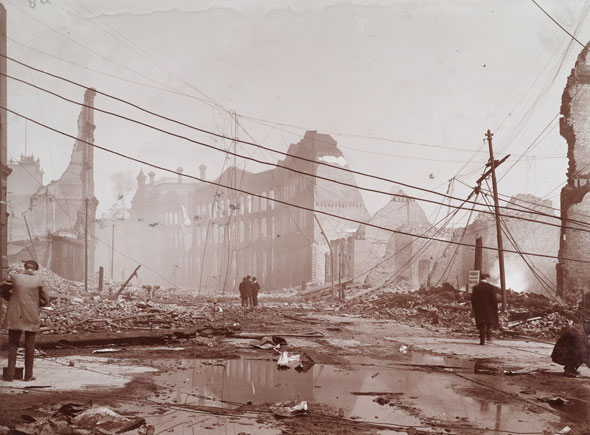
Looking east along Front from Bay St. By 11:00 p.m., the fire had caused buildings on Front to collapse into the street, pulling down electricity lines.
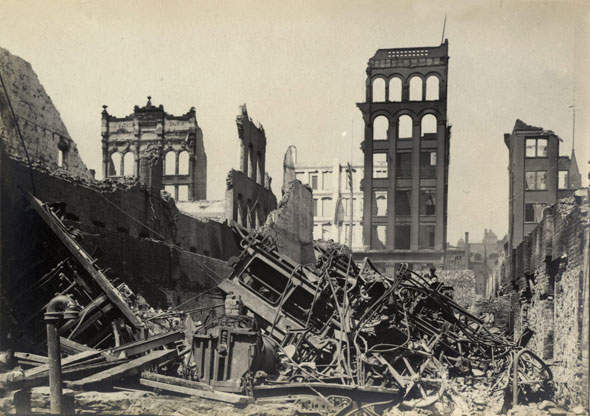
Remarkably, no-one was killed in the blaze, though a few firefighters suffered burns. However, more than a 100 buildings were destroyed.
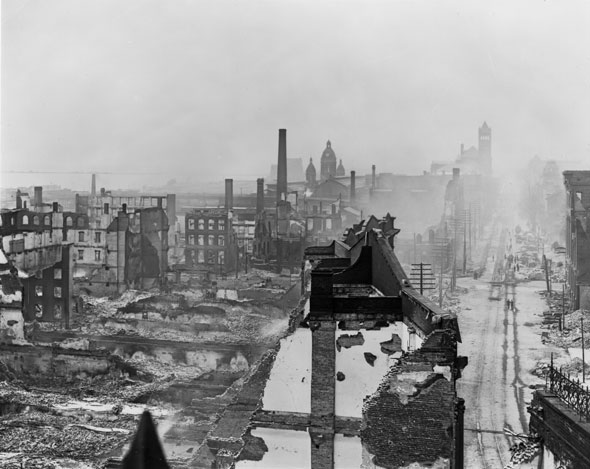
West along Front towards Union Station. Nightwatchman Johnson believed the fire had been triggered by an electrical fault inside the E. & S. Currie necktie factory.
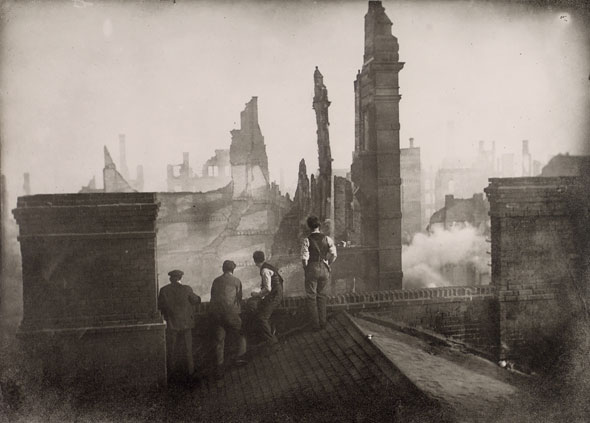
Alarm box 12, the one Johnson used to raise the alarm, was located where TD Centre stands today. The box itself is still in the possession of Toronto Fire.
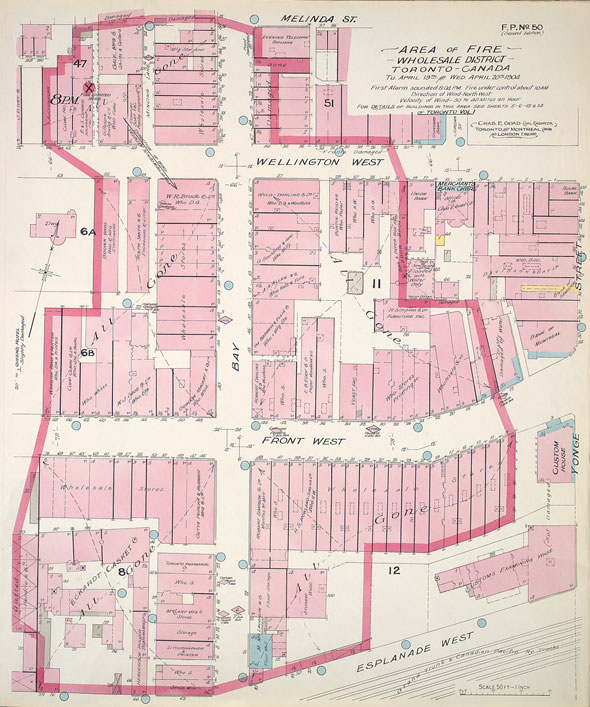
A map of the area destroyed by fire. The blaze started in the northwest of the area circled in red, near Bay and Wellington, and traveled southeast on the wind to the Esplanade.
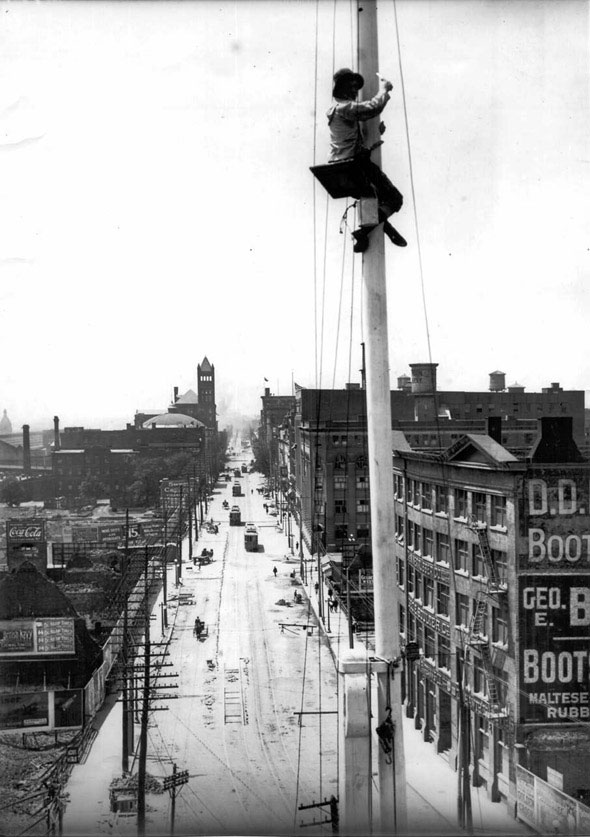
A boy paints a flagpole overlooking Front St. in 1907. Many of the buildings destroyed by the fire are still in ruins.
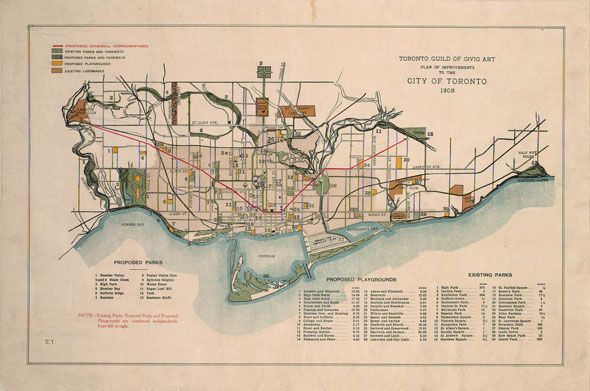
Plan of proposed improvements to the city as suggested by The Guild of Civic Art, a group of artists and architects. Central to the 1908 concept was a pair of diagonal roads (marked in red) that would have cut into the city from the northwest and east. The group, formed in 1897, also proposed several new parks and playgrounds.
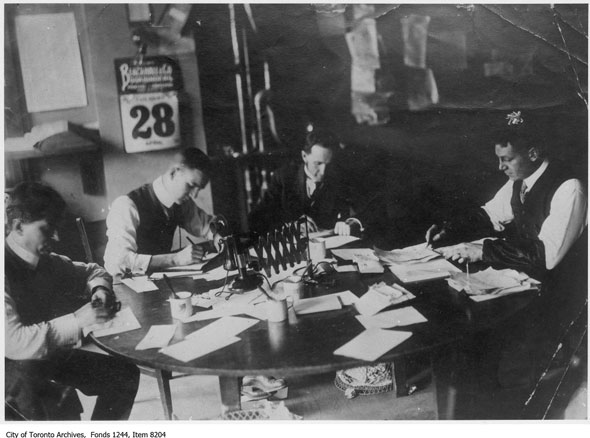
Toronto Evening Star reporters at a desk in 1908.
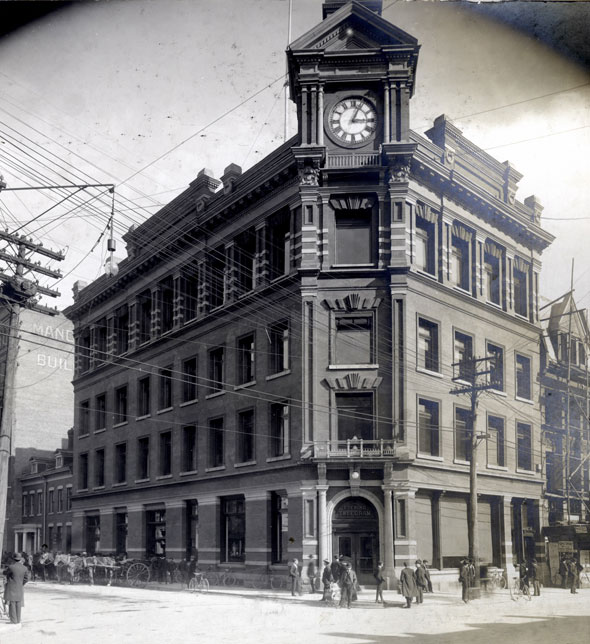
Exterior of the Evening Telegram building at the southwest corner of Bay and Melinda. Buildings on three sides of the offices were damaged or destroyed during the 1904 fire, but the Telegram escaped with only minor damage.
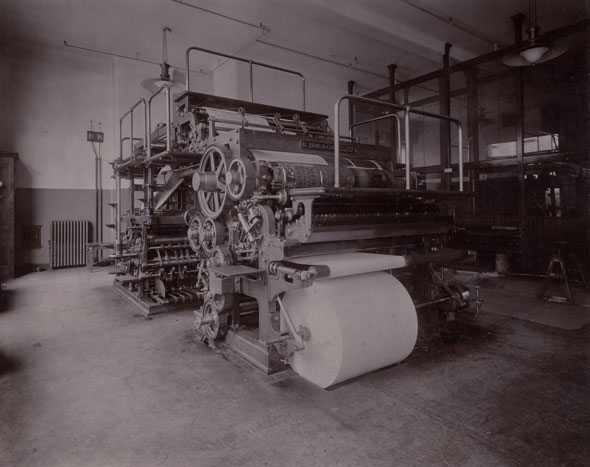
The Telegram printing press.
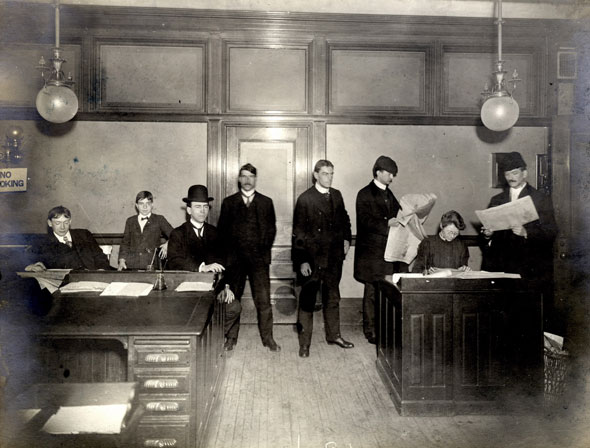
Reporters from the Telegram. For much of its existence, the paper was locked in a circulation war with the Evening Star (now the Toronto Star.) It folded in 1971.
Chris Bateman is a staff writer at blogTO. Follow him on Twitter at @chrisbateman.
Images: City of Toronto Archives (as marked.) All others Toronto Public Library, except the view of the King Edward Hotel from King, which is courtesy of Library and Archives Canada.
Latest Videos
Latest Videos
Join the conversation Load comments







